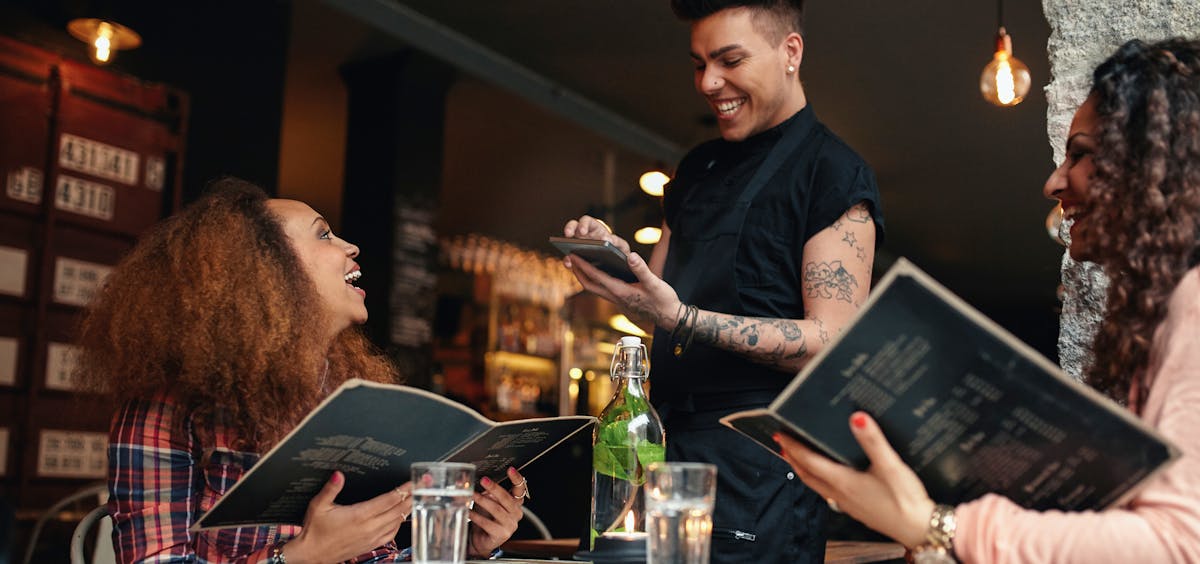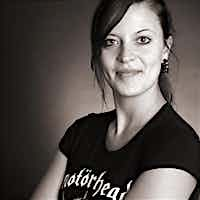Find out, why wireless and digital ordering is simply better

Wireless ordering (digital ordering) is the service extra in the catering industry: of course, you can also use the good old waiter's pad on which all orders are noted down before they arrive in the kitchen. But with a modern cash register, you can save yourself the necessary walking - which not only costs energy but also time and money. We explain how it works, how your staff can utilise the time saved profitably and why it generates more sales in the long run.
If you wait too long, you won't come back
According to a HOGAPAGE survey, 74% of all guests don't want to wait longer than 20 minutes for their order - almost a third of them consider a wait of just ten minutes to be an imposition. Those who have to wait too long with a growling stomach either don't come back - or even leave the restaurant again: 50% of those surveyed have already done this if they have had to wait longer than 45 minutes for their food.
How can you influence waiting times?
Of course, waiting times can have various causes: If your kitchen works with fresh ingredients and prepares every dish fresh with attention to detail, it will naturally take longer than if convenience products are microwaved. Here you can make up for some of this with well thought-out mis-en-place and optimise work processes as time-effectively as possible, but high-quality meals take time. The good news is that your guests know (and taste) this.
However, there are ways to pick up the pace outside of the kitchen and wireless ordering is one of them.
Two everyday stories
We have prepared two typical situations that show a small slice of everyday catering life:
A) Variant "Handwritten order"
Waitress C is looking after three tables in the outside area, which are full at lunchtime. She has already noted down the drinks for table 1, but before she can inform the bar, the birthday party at table 2 also wants to order. C spends a good five minutes here with a lengthy presentation of the wine list, the entire order takes eight minutes. Table 3 has already closed the menu and is waiting. On the way to the bar, C apologises to them: "I'll be with you in a minute!" She hands over the orders for tables 1 and 2 at the bar and takes a further two minutes in the kitchen to announce table 1 and the complicated order for table 2. On the way to table 3, she takes the finished drinks, which table 1 now receives after more than ten minutes of waiting.
She takes the orders from table 3 and brings them to the bar; before she can also place the food order, she is waved over by table 2 because another drink needs to be ordered.
She takes the order, runs to the bar again and then to the kitchen to announce table 3. There she can take the starters from table 2, which she serves. She then brings the missing drink. Table 1 asks for the bill: C goes to the bar and prints out the bill. At the table, it turns out that the bill needs to be split: To print out the required receipts on the receipt printer, C runs to the counter again. Meanwhile, the kitchen rings with the finished meal from table 2: it has to go to the guest immediately because of burning sparklers. C serves and is held up at table 2 with questions about the mandatory allergen labelling of the sparklers. Table 1 only receives the split bill after six minutes and doesn't leave a tip because the guests have already overstayed their lunch break due to the waiting time. Annoyed, they say goodbye with: "That's the last time here!" Table 3 now also signals that they want the bill.C walks back to the counter.
B) Variant "Digital Order"
Waitress C is again serving three full tables. She types the drinks order from table 1 into her mobile cash register and sends it directly from the table to the bar with a click. She then takes the complicated order from the birthday party at table 2 and sends it to the bar and kitchen with any extra requests. She also takes table 3 directly and sends the receipt by radio. She then runs to the bar for the first time and takes the finished drinks from the three tables. Table 1 receives its drinks after six minutes; C directly takes the missing drink from table 2 and can serve it together with the drinks for table 3. C then exchanges a few words with the regulars from table 3 and replaces the stained sets on an empty table before the kitchen rings with the starters from table 2. After serving, Table 1 asks for the bill, which C separates on request and prints out directly at the table using her mobile till. She receives an appropriate tip and praise for her friendliness. She then serves Table 2 the dish with the sparklers and collects at Table 3.
Less running, more time
Even if you haven't read our short extracts from everyday catering life, you will have noticed the difference in text length: It came about because there were significantly more work steps and walking distances to cover in "handwritten order situation" than in "digital receipt situation" - there was even some time left over here for table preparation and socialising with guests, whereas otherwise the waitress mainly had to run back and forth between the kitchen, bar, checkout counter and table. And that with only three tables!
Those who work with the "handwritten order variant" not only send their staff on double the walking routes, but also lose a lot of time: this fuels impatience among guests, wastes valuable time and can ultimately even cost sales.
This plays a particularly important role at peak times, when your staff have to deliver top performance in a short space of time in order to satisfy all guests. The stress level and demands are therefore high. With radio ticketing, you take the pressure out of the situation - and speed things up.
Digital ordering: From the table directly to the bar and into the kitchen
With a mobile cash register - whether tablet or smartphone - the order is sent wirelessly from the table to the connected receipt printer in just a few milliseconds. In other words: one click and the relevant stations in the kitchen or at the bar receive their instructions so that food or drinks can be prepared and served with pinpoint accuracy.
|
Digital order - what can it do? |
|
|
Advantages for your guests |
Advantages for your staff |
|
|
Of course, digital ordering also has advantages for you as a restaurant owner: Satisfied guests are happy to come back, recommend you to others and generate reliable sales. And if your staff are exposed to less stress, they also enjoy their work more - so good staff are happy to stay with you!
The extra time-saving tip: Separate runners and service
If your restaurant is buzzing and you have a lot of tables to serve, it can also make sense to hire so-called "runners". These assistants support your highly qualified service staff by taking over serving and clearing up.
While your trained specialist staff provide good service directly to guests using mobile devices, the runners take on less demanding tasks. This provides additional relief for the service staff and makes it even more convenient for guests.

Sabine Amler
Senior Content Manager
As a trained bookseller, Sabine is familiar with both sides of the counter. She combines this practical know-how of cashing up, bookkeeping and tax with many years of experience in marketing to create informative texts.